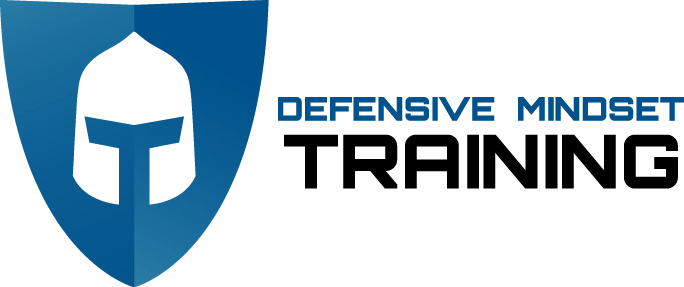When most people pick out a handgun for carry they look for three things:
- Does it "feel good" in my hand?
- What is the "stopping power" of the round?
- Is it a cool brand?
If you know anything about SMT, you probably realize that we don't really operate that way.
Personally, I hate the "feel good in my hand" argument the most. The reason is that most people who say this have totally ineffective grips. So what "feels good" to someone who has a poor grip on the handgun is actually reinforcing the bad grip.
Great.
To help you out the next time you're in the market for a handgun, here's my mini-guide on how to select a quality defensive handgun.
Bore Axis to Top of Grip Ratio
The higher the center of the bore from the top of your grip, the more the muzzle will rise when you shoot it, which is what most would refer to as "recoil." The reason that firearms have more or less muzzle rise can vary from ammo shot to materials the firearm is made out of, but bore axis height is a pretty significant aspect. For example, here's a Glock 22 next to a Sig P226. One blue line represents the bore, and the other represents the top of your grip.
It's pretty clear to see, the Sig P226 (45 mm) has a significantly higher Bore Axis to Top of Grip Ratio than the Glock 22 (20 mm). This will contribute to a larger muzzle rise - that is, greater recoil. If you were only concerned with "feel" you'd miss this aspect of the handgun entirely.
Action Type
When I speak of Action Type, many would think of Trigger Type. But what I mean is, when you pull the trigger, what does the gun do? There are generally four types of handgun actions: A Single Action Only (SAO), a Double Action Only (DAO), a Double Action/Single Action (DA/SA), and a Striker Fire.
A Single Action Only is found most commonly on 1911-style firearms. When you pull the trigger it only does one thing: send the hammer forward onto the firing pin and fire off the round. These triggers are usually very light and have little or no staging point. In concealed carry, this can be really dangerous. If you screw up the timing of that trigger press, it could cost you.
The Double Action Only is found on a lot of revolvers and on a select few semi-autos like the H&K P2000 LEO model. These triggers are long and often very heavy. There are some shooters that can become very proficient at using DAO triggers, but it takes a long time to develop the strength for fast splits and to calibrate the trigger finger for proper presentation of the firearm without flinching.
The Double Action/Single Action may seem like the best of both worlds. The first shot on these actions is a long heavy and "safer" Double Action pull, but after the first shot, these firearms are now functioning as Single Action Only handguns. Seems like a good idea, but what you have is a handgun with THREE different trigger pulls to learn. A heavy Double Action press on the first shot, then a transition to a Single Action Only shot and then an SAO reset thereafter. These types of firearms, like Sig P226s or H&K P3s, are heavily favored by groups like the SEALs... but here's where you and I, as Citizen Defenders, have different needs than a SEAL. The SEAL with this handgun has almost UNLIMITED amounts of ammunition to practice and develop the three separate neural pathways that are involved with pulling the P226 trigger. If you want to dedicate the time necessary to developing this complicated trigger press, rock on. If you want to learn ONE method, this is probably not the best choice.
The final trigger action is the Striker Fire. These are found on handguns like the Sig P320, or Smith & Wesson M&P or any of the Glock firearms. The benefit here is a single consistent trigger, lighter than the DAO, but not so light as the SAO. In addition, the Striker Fire action has more range of motion than the Single Action Only, allowing you to quickly develop the neural pathway of finding the trigger's slack out position, which increases consistency with first shots, reduces flinches, and speeds up your follow-through. The big deal with this trigger is that it is CONSISTENT. You learn one trigger press, so when you go under stress for the defense of your life and can't think clearly, you only have to remember the ONE trigger press.
Capacity vs. Concealment
Have you ever heard a gunfighter say: "Gee, I wish I'd brought the smaller gun with less ammunition"? Gunfights are not like the movies. Humans are pretty darn tough and can take a lot of punishment unless they're hit just right. There's a good chance that you'll empty your firearm in a defensive fire fight. The question you must ask yourself is, if you have some tiny pocket pistol and that fight goes past 5 rounds, then what? How many reloads do you have, if any? And how quickly can you do it?
Not everyone wants to - or can - carry a full-size firearm, but it's something to consider. I think it's all in HOW you carry, rather than WHAT you carry. Most women, as an example, carry off-body in a purse or bag. There's no need for a tiny gun there. Plus for women, larger firearms means more weight in the firearm, so the gun itself will take up more of the recoil and make it easier to shoot. For guys, if you're wearing an Inside the Waistband holster, it's pretty easy to conceal a full-size firearm.
SMT's position is this: Carry the largest handgun, with the most ammunition, that you can comfortably conceal and shoot the fastest with the most accuracy.


